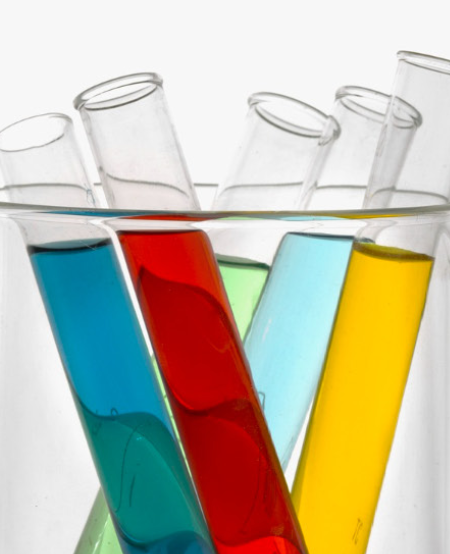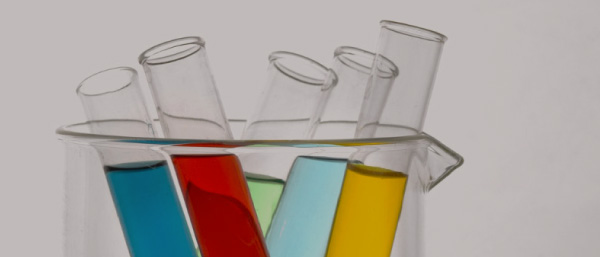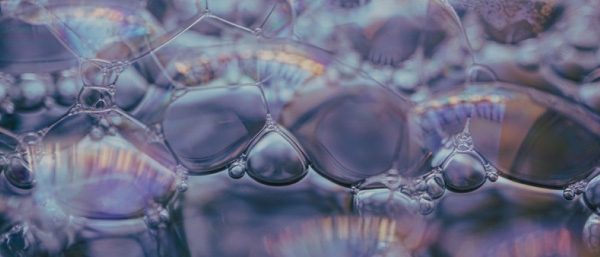Features
Aromatic Chemicals in the Perfumery Industry: The Key Components for Creating Unforgettable Fragrances
In the fascinating world of perfumery, aromatic chemicals are essential components for creating perfumes and fragrances. These synthetic or natural compounds are responsible for giving fragrances their olfactory characteristics, so that mixtures of these ingredients can generate a huge variety of aromas that evoke unique emotions, memories, and sensations.
In 2024, advances in aromatic chemistry continue to innovate the perfume industry, driving both the creation of new fragrances and the improvement of existing ones, while seeking to maintain sustainability, safety, and sensory diversity.

1. What Are Aromatic Chemicals?
Aromatic chemicals are chemical compounds that have the ability to evoke smells and are used in the formulation of perfumes and aromatic products. They can be either natural or synthetic in origin and are grouped into different classes of compounds, each with specific sensory characteristics. Their use in perfumery is essential because they allow perfumers to create complex combinations that form the basis of each fragrance.
a. Composition and Characteristics:
Aromatic chemicals are usually made up of volatile molecules, which means they can evaporate quickly into the air and be detected by our sense of smell. These molecules are responsible for transmitting the sensory information we perceive as scent. Aromatic compounds can be simple (with few molecules) or complex (with multiple chemical elements that interact with each other).
b. Difference Between Natural and Synthetic Aromatic Chemicals:
- Natural: They are extracted directly from plant or animal sources, such as flowers, fruits, woods, spices, among others. Essential oils are examples of natural compounds used in perfumery.
- Synthetics: These are compounds created in laboratories from basic chemicals, such as synthetic aromatics, which mimic natural aromas or create new combinations of scents that do not exist in nature.

2. Categories of Aromatic Chemicals Used in Perfumery
Aromatic chemicals are grouped into different families or olfactory families, which reflect their origin and sensory profile. Some of these categories are essential for creating the notes (top, middle, base) that make up a fragrance.
a. Terpenic Compounds
Terpenes are compounds derived mainly from plants, and are responsible for many of nature's characteristic aromas. They are often found in essential oils and have a chemical structure that includes isoprene units (a basic compound that forms the basis of terpene chains). Some examples are:
- Limonene: A citrus compound found in citrus peel, which provides freshness and radiance.
- Pinene: Derived from pines and conifers, it provides a fresh, green aroma.
b. Esters
Esters are compounds created by the reaction between an acid and an alcohol. They are responsible for many fruity and floral fragrances and are known for their sweet, fruity aromas. Common examples include:
- Ethyl acetate: It provides a fruity aroma, similar to that of apple or pear.
- Linalyl acetate: Found in lavender, it has a fresh and relaxing floral aroma.
Esters are essential for creating fruity and floral notes in fragrances.

c. Aldehydes
Aldehydes are chemical compounds containing a functional group that includes a carbon, oxygen, and hydrogen atom. In perfumery, they are highly prized for their ability to add freshness, brightness, and volume to fragrances. They have the property of giving fragrances an intensity that can make them more complex and long-lasting. Examples of aldehydes include:
- Aldehyde C-12: Responsible for fresh and clean fragrances, such as floral or woody perfumes.
- Benzaldehyde: Known for its almond or cherry aroma, used in perfumes with sweet or gourmand notes.
d. Cyclic Aromatics
Cyclic aromatic compounds are those that contain rings of carbon atoms. These compounds are known for their woody, spicy, and balsamic notes. Some common examples are:
- Benzene: It is often a base for the creation of other aromatic compounds in perfumery.
- Aromatic hydrocarbons: Like toluene, which has a sweet, balsamic fragrance.
These compounds are frequently used in the base notes of fragrances, contributing to the depth and persistence of perfumes.

3. The Role of Aroma Chemicals in Fragrance Creation
Aroma chemicals allow perfumers to design fragrances that are perceived as complex and multidimensional. To achieve a balanced fragrance, perfumers must blend various aroma chemicals so that the notes complement each other, creating a harmonious sensory experience.
a. Top, Middle, and Base Notes
Aroma chemicals have the ability to influence the different stages of a fragrance's evolution, also known as notes:
- Top notes: They are the first to be perceived when applying the perfume and are characterized by being fresh and volatile, mainly using compounds such as terpenes or aldehydes.
- Heart notes: These notes develop after the top notes disappear and form the "soul" of the fragrance. Esters and alcohols predominate in this phase.
- Background notes: These notes remain on the skin the longest and provide longevity to the fragrance. Compounds such as cyclic aromatics, musks, or woods are often present in these notes.
b. Increase Longevity and Projection
Combining certain aromatic chemicals with ingredients such as synthetic musks or fixatives also helps extend the fragrance's duration on the skin and improves its projection. Some aromatic chemicals are more volatile and disappear quickly, while others linger longer, which is essential for balancing evaporation and scent persistence.

4. Trends and Advances in the Use of Aromatic Chemicals in 2024
The use of fragrance chemicals continues to evolve, especially with the demand for more sustainable, safe, and personalized products. As consumers seek more natural and less synthetic fragrances, manufacturers are experimenting with creating new compounds that mimic natural scents or those from less invasive sources.
- a. Trends towards Sustainability
With the growing focus on sustainability, the perfume industry is seeking greener and more responsible alternatives in the production of fragrance chemicals. This includes biotechnology to produce certain compounds more efficiently and with less environmental impact, as well as exploring the creation of synthetic fragrance chemicals that can ethically replace natural ingredients.
- b. Aromatic Chemicals for Custom Perfumes
The rise of personalized fragrances has led to the use of aroma chemicals that allow consumers to create unique perfumes tailored to their specific preferences. By utilizing a wide range of ingredients and synthetic components, perfumers can design fragrances tailored to each individual's body chemistry.
- c. New Gourmand and Therapeutic Fragrances
Advances in aroma chemicals are also enabling the creation of gourmand (savory and sweet) fragrances, using synthetic compounds that mimic flavors like chocolate, vanilla, or caramel. Furthermore, essential oils and aroma chemicals are being incorporated into perfumes that seek to improve emotional well-being and reduce stress, encouraging the use of ingredients with relaxing and energizing properties.













